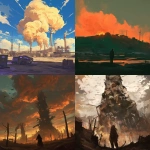Explore the Best AI Image Gallery
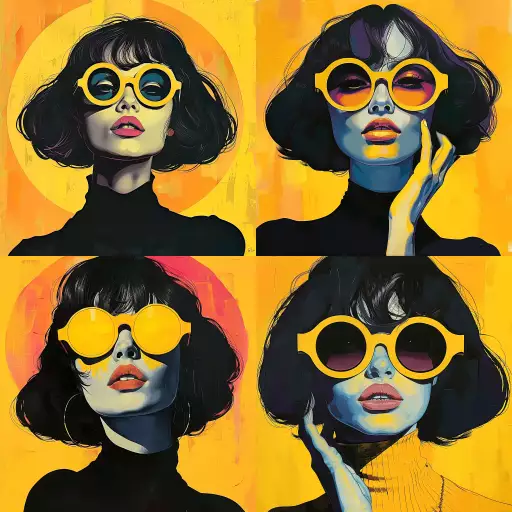
Beyond Pixels: Blockchains Impact on the Creative Industry
Blockchain technology, once confined to the realm of cryptocurrency, is now making waves across diverse sectors, including the creative industry. Its inherent features—decentralization, transparency, and immutability—present a compelling proposition for artists, musicians, writers, and content creators seeking new avenues for ownership, distribution, and monetization.
Potential Uses in the Creative Landscape
- Digital Art & NFTs: Blockchain empowers artists to mint Non-Fungible Tokens (NFTs), representing unique digital artworks. NFTs provide verifiable proof of ownership and authenticity, enabling direct sales to collectors and bypassing traditional intermediaries like galleries.
- Music Distribution & Royalties: Smart contracts on the blockchain can automate royalty payments to musicians for every stream or download, ensuring fairer compensation and reducing reliance on centralized platforms.
- Copyright Protection: Blockchains immutable ledger can record ownership of creative works, making it difficult to infringe upon intellectual property rights. This strengthens creators control over their content and provides evidence of original authorship.
- Collaborative Creative Projects: Decentralized platforms powered by blockchain facilitate collaboration among artists across geographical boundaries. They enable transparent contribution tracking, fair attribution, and shared ownership of creative projects.
Ethical Considerations & Challenges
While blockchain offers immense potential for the creative industry, it also presents ethical considerations that require careful navigation:
- Environmental Impact: Some blockchain networks, particularly proof-of-work systems, consume significant energy, raising concerns about their environmental footprint. Exploring more sustainable blockchain alternatives is crucial.
- Accessibility & Inclusivity: The technical complexities of blockchain can create barriers to entry for underrepresented creators who may lack the resources or knowledge to participate fully. Initiatives to promote accessibility and digital literacy are essential.
- Data Privacy & Security: While blockchain enhances transparency, its crucial to ensure that sensitive creator data is protected from breaches and misuse. Robust security measures and privacy-preserving technologies are necessary.
Future Trends in Blockchain & Creativity
The intersection of blockchain and creativity is constantly evolving. Here are some future trends to watch:
- Integration with the Metaverse: Blockchain will play a vital role in enabling ownership and monetization of digital assets within immersive metaverse experiences, fostering new forms of creative expression.
- Decentralized Autonomous Organizations (DAOs): Creative communities can leverage DAOs to collectively manage projects, distribute funds, and make decisions democratically, empowering artists and fostering collaboration on a larger scale.
- AI-Powered Creativity: Blockchain can facilitate the use of artificial intelligence in creative processes, enabling artists to generate novel content, experiment with new ideas, and push the boundaries of artistic expression.
Blockchain technology has the potential to revolutionize the creative industry by empowering creators, fostering transparency, and unlocking new avenues for innovation. As this technology continues to evolve, we can expect to see even more transformative applications that reshape the way we create, consume, and interact with art and culture.







](https://images.ai-img.art/thumbnails/150/bd056a4718c27444e064198762f8dc8ffa1f74f1afd7dcda8d5cb8b142797d6e.webp)
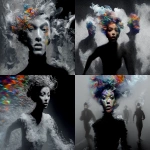







](https://images.ai-img.art/thumbnails/150/7cf5a08238f29c821f52bb4f63db48af0b7f633ff3b9f7253074d78ced9ff6f6.webp)

](https://images.ai-img.art/thumbnails/150/a3ed6513a6661aa3ee46e0c2924d1e8888854e91d8908de39db5590dc41f8d8f.webp)



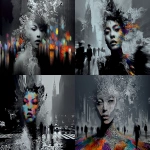
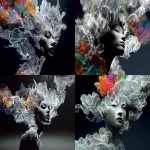

](https://images.ai-img.art/thumbnails/150/2ebdeb4f7db35100e5be5de9bc3e533a40d14e5feedefd7ffc586524a0f3ba8c.webp)






](https://images.ai-img.art/thumbnails/150/0ba0be922ab76af53f75ab90126ae2b18a600ee3b96941e8ab897a9f10594e5a.webp)



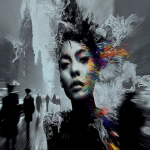



](https://images.ai-img.art/thumbnails/150/ff09e32d2be011c0dd785984c5c1e47839ce551a31da1bde242860b30df2aa30.webp)
](https://images.ai-img.art/thumbnails/150/847809c77ca9a73b68bc190e6efb06fec87157685a243730d5a66a403b0e6e10.webp)



](https://images.ai-img.art/thumbnails/150/685ae68cfab93a7e59a71206867b060c45bd6fd3cd561c4fe60fca514b09c5f8.webp)



